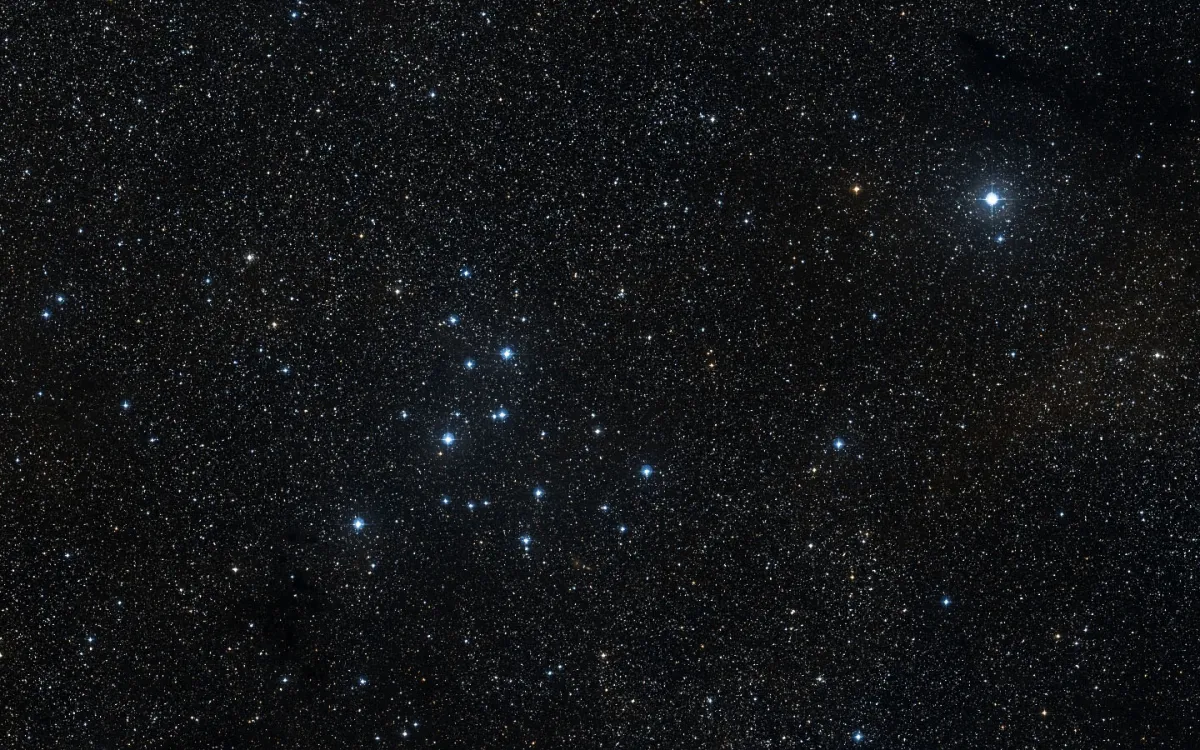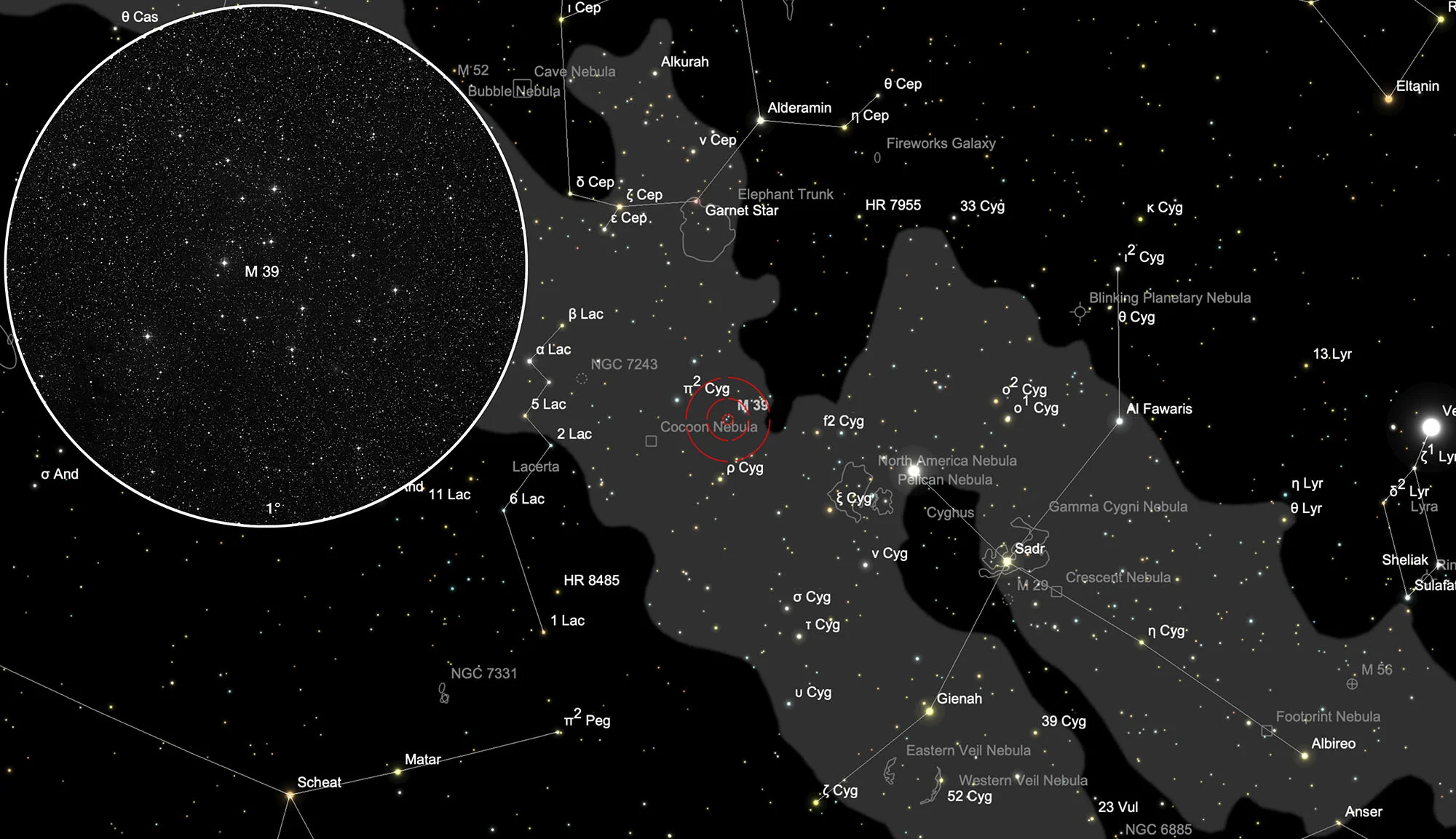Open Cluster Messier 39

History
This large, loose star cluster was already discovered by Aristotle in 325 BC. Noticed as a meteoric appearing object. Charles Messier took it on 24 October 1764 as the 39th item in his list. [4, 196]
Physical Properties
The star cluster is of the Trumpler type III2p and has around 30 members, scattered over about 0.5° According to the H-R diagram of the cluster, practically all members are on the main sequence, except for the brightest pair, which are at the beginning of the evolution to the giant stage. The cluster is probably younger than M 44 but older than the Pleiades. The distance is about 310 pc. [4, 145]
| Designation | NGC 7092 |
| Type | OCL (III2p) |
| Right Ascension (J2000.0) | 21h 31m 52.0s |
| Declination (J2000.0) | +48° 25' 30" |
| Diameter | 31 arcmin |
| Visual magnitude | 4.6 mag |
| Metric Distance | 0.311 kpc |
| Dreyer Description | Cl, vL, vP, vlC, st 7…10 |
| Identification, Remarks | h 2126; GC 4681; M 39; OCL 211 |
Finder Chart
The star cluster is in the constellation Cygnus. The best observation time is from April to January.
